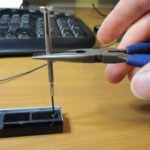Understanding your auto loan with Bridgecrest is crucial, especially when it comes to avoiding repossession. Bridgecrest utilizes simple interest loans, a system where interest accrues daily based on your outstanding loan balance. This means the amount you owe at any given time directly impacts how much interest you pay. Let’s break down how this works and what it means for you, particularly concerning late payments and the question: will Bridgecrest repo my car?
How Simple Interest Loans Work
With a simple interest loan from Bridgecrest, interest is not predetermined for the entire loan term. Instead, it’s calculated daily on the principal balance – the initial loan amount minus any payments you’ve made towards the principal. Each payment you make is divided: a portion covers the accrued interest, and the remainder reduces your loan balance.
Initially, when your loan balance is higher, a larger portion of your payment goes towards interest. As you consistently make payments and reduce the principal, more of each payment starts chipping away at the loan balance itself. This structure rewards early and on-time payments, as a lower balance means less interest accrues over time.
The Impact of Late Payments on Your Loan and Repossession Risk
The repayment schedule for your Bridgecrest loan is designed assuming timely payments. However, late payments disrupt this schedule and can increase the overall cost of your loan and, critically, your risk of repossession.
When you make a payment late, additional interest accumulates for each day the payment is delayed. Upon receiving a late payment, Bridgecrest first applies it to cover the accumulated extra interest due to the delay. Only after the additional interest is covered does the remaining portion of your payment reduce your actual loan balance.
This has a compounding effect. Because more of your late payment goes to interest, your loan balance decreases less than originally scheduled. Consequently, for your subsequent payments, interest will be calculated on a higher balance than anticipated. This cycle means more of your future payments will also be directed towards interest, and less towards reducing the principal. Unless you make extra payments or pay ahead, your loan payoff will be significantly delayed, costing you more in interest over time.
More importantly, consistent late payments can signal financial distress and breach your loan agreement terms. While the immediate concern of a late payment is the added interest, a pattern of late payments increases the risk that Bridgecrest will consider your loan in default. Loan default is a serious situation that can ultimately lead to car repossession.
Will Bridgecrest Repo My Car? Understanding Repossession
Repossession is the legal process where a lender takes back the vehicle if the borrower fails to meet the loan agreement terms, typically due to non-payment or frequent late payments. While Bridgecrest, like any lender, would prefer you to successfully repay your loan, they have the right to repossess your vehicle if the loan terms are violated.
To minimize the risk of Bridgecrest repossessing your car:
- Prioritize Timely Payments: Make every effort to pay on or before your due date.
- Communicate with Bridgecrest: If you anticipate difficulty making a payment, contact Bridgecrest immediately. They may have options or programs to assist you.
- Understand Your Loan Terms: Review your loan agreement carefully to fully understand the terms regarding late payments, default, and repossession.
In conclusion, while having a simple interest loan with Bridgecrest can be manageable with responsible payments, late payments can lead to increased interest and raise concerns about potential repossession. By understanding how your loan works and prioritizing timely payments, you can effectively manage your loan and reduce the risk of “Bridgecrest repo my car” becoming a reality.

